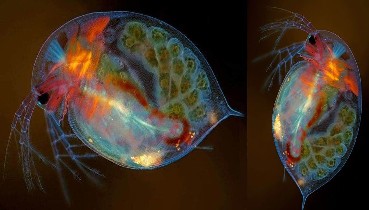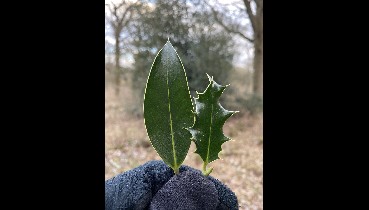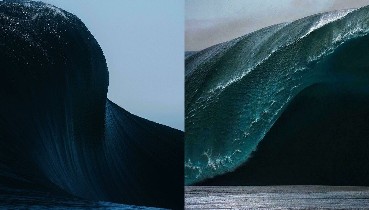Large bodies of water may seem like a permanent feature of the natural world, but there are some exceptions. Scientists and explorers have discovered lakes, rivers, and other waterways around the world that seem to disappear entirely.
In some cases, sinkholes can cause entire lakes to disappear in a matter of days. In alpine areas and polar regions, cracks in ice sheets can burst glacial dams, draining lakes overnight. And some rivers pass through caves, flowing underground for miles before resurfacing downstream.
Usually, researchers eventually uncover the unique circumstances that lead to these disappearances. However, some bodies of water drain away for reasons unknown.
From sinking rivers to vanishing lakes, here are 10 places in the world where water disappears.
Lake Cerknica
bingokid / Getty Images
For eight months out of the year, Lake Cerknica in Slovenia flows with water across about 11 square miles—making it the largest lake in the country. It serves as both an important wildlife refuge and a popular recreational site.
However, the lake is connected to a number of subterranean passageways and reservoirs, which are constantly flowing into and out of the lake. During the summer, when rainfall is low, the lake's water drains into lower reservoirs, leaving the lake bed dry. When the rains return, the higher reservoirs fill and water flows back into the lake. Due to the complicated passageways, the water level can be highly irregular. The lake can stay filled for years, or remain dry for up to a year during droughts.
Lake Cachet II
williamhc / Getty Images
In April 2008, a glacial lake in the Andes known as Lake Cachet II disappeared overnight. Geologists who visited the lake bed in Patagonia, Chile first hypothesized that an earthquake in a neighboring region had created a crack in the earth, draining the lake.
Later, it was discovered that the drainage was caused by a glacial lake outburst flood. The lake is dammed by the Colonia Glacier, which itself had been melting at a higher rate. The increased pressure eventually caused the glacial dam to burst, creating a hidden tunnel five miles beneath the surface and sending 200 million cubic meters of water into Colonia Lake and the Colonia River. Since the initial burst in 2007, Lake Cachet II has refilled and disappeared several times.
Greenland Ice Sheet
Persefoni Photo Images / Getty Images
Most of Greenland is covered by an enormous ice sheet, which stretches for 660,000 square miles and is on average over a mile thick. The ice sheet supports bright, turquoise blue lakes, known as supraglacial lakes, which sometimes disappear rapidly.
In 2015, billions of gallons of water in two supraglacial lakes on the ice sheet vanished in a matter of weeks. Glaciologists have since discovered that the lakes—which had been stable for years—drained rapidly through vertical cracks in the ice leading to the bottom of the ice sheet. Researchers believe the appearance and disappearance of these lakes is connected to warming trends in the ice sheet due to climate change.
Lost Lake
joshuaraineyphotography / Getty Images
Every winter, runoff from melting snow pools to form Lost Lake in Oregon's Mount Hood National Forest. By summer, though, the lake transforms into a dry meadow. There's a geological explanation for the bizarre annual occurrence. A lava tube—a narrow underground opening formed by an ancient lava flow—drains water from the lake like a bathtub.
Lost Lake is constantly draining, but it only becomes evident in late spring, when the lava tube drains water faster than melting snow and rain can refill the lake. It’s unclear exactly where the water goes when it disappears down the lava tube, but Forest Service scientists say it’s possible that it seeps into porous volcanic rock and feeds springs in the Cascade Range.
Devil’s Kettle Falls
ramesh1502 / Getty Images
A waterfall in Judge C. R. Magney State Park in Minnesota has been puzzling scientists for decades. At Devil's Kettle Falls, the Brule River forks at a rock outcropping, and the eastern side of the falls tumbles into the water below while the western side disappears into a large pothole.
Scientists suspect the water in the pothole rejoins the river, since the flow of the river above the falls is nearly the same as it is below. Researchers and other curious people have dropped colored dyes, ping pong balls, and other objects into the hole and searched for signs of them, but none have resurfaced.
Lake Beloye
Ivan Stupa / Shutterstock
In spring 2005, Lake Beloye near the village of Bolotnikovo, Russia disappeared overnight. All that was left was an empty lake bed and a large crater with a hole that led underground. Nearly a year later, the remaining cavity began to fill up with water, but quickly drained again. The area’s karst topography creates landforms like tunnels and caves that can move water underground, and the water from the lake likely ended up in the nearby Oka River.
Unac River
MilanMaksovic / Getty Images
The Unac River, in Bosnia and Herzegovina, travels underground for long stretches of its 40-mile length. It is an example of a sinking river, or losing river, which is a river that loses volume as it flows downstream. In the case of the Unac River, it doesn't just lose volume—the river disappears underground entirely for miles at a time. This is because it travels through a karstic canyon, and the flowing water has created tunnels, caverns, and passageways in the soft limestone.
The lower section of the Unac River is located in Una National Park, where it also flows into the larger Una River.
Lake George
Ewen Charlton / Getty Images
Not far from the Australian capital of Canberra, Lake George has been known to disappear entirely. The lake is an endorheic basin, which retains water but has no outflow of water to rivers and oceans. It’s fed by small creeks and rainwater, and is nearly as salty as seawater. When full, it is 16 miles long and over six miles wide, but on average only three to four feet deep.
Several times throughout history, the lake has dried out completely, typically during droughts. When the lake is full, it’s often used as a fishery, and when the water vanishes, farmers use the land to graze sheep and cattle.
Lake Waiau
wekeli / Getty Images
Sitting near the summit of Mauna Kea at 13,020 feet, Lake Waiau is one of the only natural lakes in Hawaii. However, in 2010, Lake Waiau began to shrink, and by 2013 it was reduced to no more than a puddle. After a particularly wet winter in 2014, the lake was replenished and bounced back to its normal volume.
While scientists suspect drought was the cause of the lake’s decline, the severity of the water loss has never been fully explained, especially since there is no historical record of the lake shrinking to such an extent before 2010.
Sinks Canyon
Gabe Adams / 500px / Getty Images
Sinks Canyon is a steep, rugged canyon near the Wind River Mountains in Wyoming, where the Middle Fork of the Popo Agie River disappears into a cavern called "The Sinks." The water resurfaces in a large pool called "The Rise" about a quarter-mile away, and then continues to flow downriver. Dye tests have shown that the water takes several hours to travel through the labyrinthine cavern system.
The limestone formation in the canyon is likely responsible for this sinking river, since water can easily erode this soft rock.


:max_bytes(150000):strip_icc():format(webp)/cerknicalake-2b9a096ba4c643b78cada1f5366342ad.jpg)
:max_bytes(150000):strip_icc():format(webp)/lakecachetII-0dd46c5c1b2445148ff9ce1430d82612.jpg)
:max_bytes(150000):strip_icc():format(webp)/glaciallakegreenland-414d8205b1644d3e97f6d0e58ae2648d.jpg)
:max_bytes(150000):strip_icc():format(webp)/lostlake2-5f0798f688554b0fb14ee23efbbac562.jpg)
:max_bytes(150000):strip_icc():format(webp)/devilsfalls-9bce9c27162a4079ad64024572f7cf24.jpg)
:max_bytes(150000):strip_icc():format(webp)/__opt__aboutcom__coeus__resources__content_migration__mnn__images__2018__07__shutterstock_369682031-e64b56ba19d947b6a69640bb0ab4d827.jpg)
:max_bytes(150000):strip_icc():format(webp)/unac-75e9f90a0bf949a2838f489d4946d17f.jpg)
:max_bytes(150000):strip_icc():format(webp)/lakegeorge-f247ed5b9f01403397ec9e6ffd077746.jpg)
:max_bytes(150000):strip_icc():format(webp)/waiau-8e64ecec7c8442ab9c1b6fd0de82f618.jpg)
:max_bytes(150000):strip_icc():format(webp)/sinkscanyon-7d30b35e1f9c41ca92f54964784d5630.jpg)











